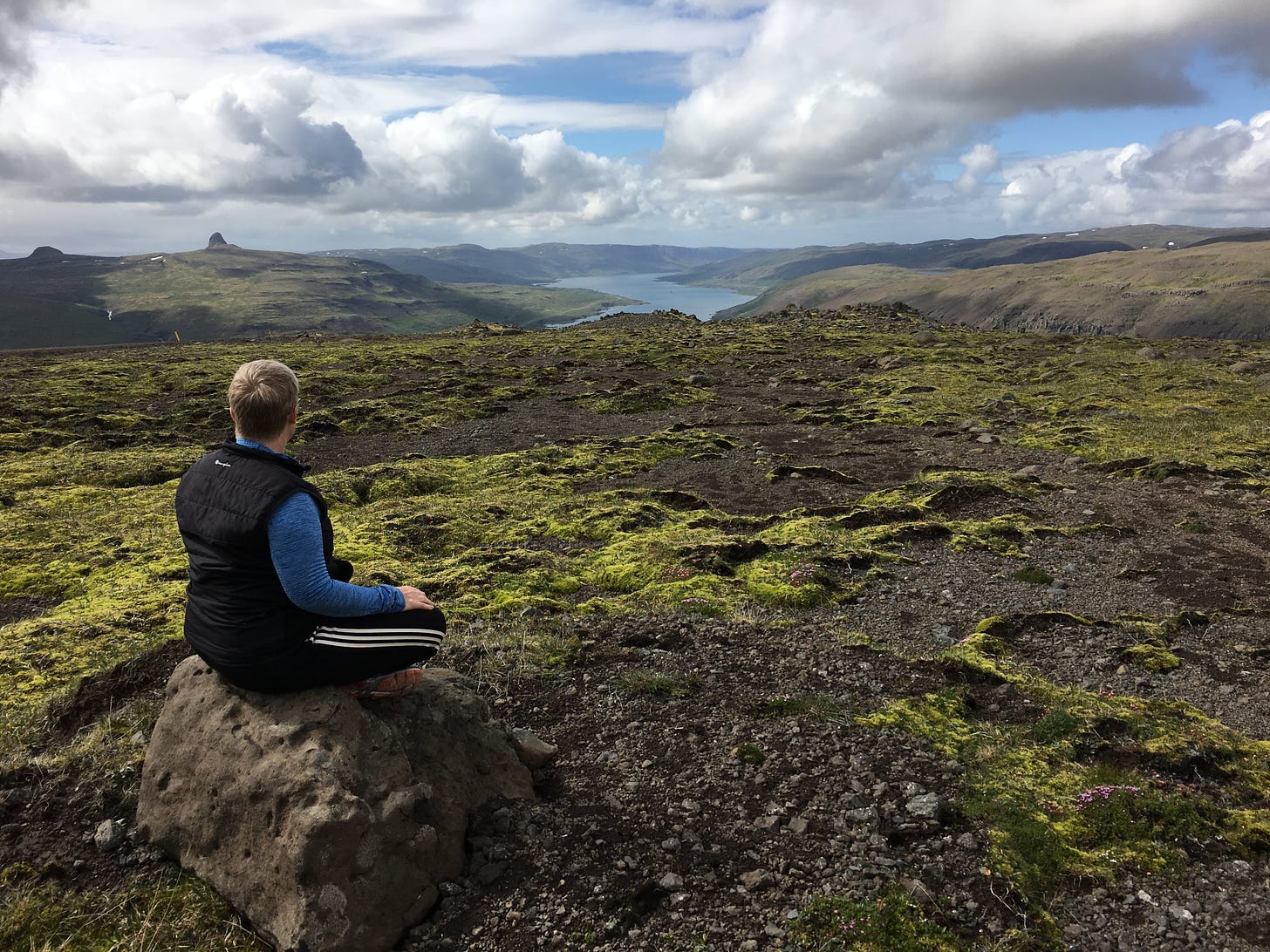I love to travel, and I am lucky to have a husband who is the detail guy - finds the hotels, researches what to do, books the flights, etc. We plan our trips before we leave, but when we are engaged in the actual place, we try to be open to whatever adventures or sidebars or unexpected pleasures may arise. For example, a road closure in Iceland on the way to a waterfall in the west led us on a detour through one of the most gorgeous landscapes we’d ever seen. We eventually arrived at our destination and fulfilled our plan, but the sidebar was pretty astounding.
I tend to use both planning and intuition when I write. In drafting, I try to let the writing go wherever the language is leading, even if I’m not sure what it means. I still draft long-hand (I’m even typing this post from notes I already took in my journal), and I often don’t read back what I’m writing until I reach a stopping point. I find that this leads to more surprises. (It also leads to a lot of nonsense, no lie, but so be it.) It’s only then that I switch on my planning brain and tend to turn methodical in revision. Cut, add, change the order, tighten the language, hone the sound and diction. Even though this seems like an intellectual process, intuition is important here as well. A feeling about a word. An instinct to go against what seems logical. Both the head and the heart have their place, which is why my first draft of a piece is NEVER the way it ends up. Editing puts the head back in play, and then the heart needs to decide when a piece is “done.”
In making visual pieces, I find I lean more heavily on intuition. I almost never plan a piece of artwork beyond having materials at hand. I start and then go with whatever looks right to me at the time. I’ve found in the past that, when I make something I’m really pleased with, it almost never works when I try to recreate it. Whatever it was that was happening in that moment is gone. Maybe I can get close, but usually not.
What both practices have taught me as is patience. After I write a draft, I can leave it sit for a while, take some notes on places that may need writing into, places that need to be cut, ideas that are worth exploring, lines that are interesting but don’t serve the overall poem, etc. There is no immediate need for me to “finish” and submit a poem. Let’s face it, no one is sitting around wringing their hands wondering when one of my pieces is going to show up in their queue. (If those editors exist, hit me up, and I’ll send you something to ease your suffering. LOL )
When I’m painting, I have finally learned (oh, this took a WHILE) to wait in between layers, to sit with what is there and see where I want to go next. With collage-based pieces, I sometimes lay things out and move them around for days before committing to placements. It gives me a chance to think BEFORE I act, use the heart to begin and the head to continue. (And sometimes, when things don’t work at all, I let the head take over completely and throw things in the trash, cut them up for new material, or paint over them to start again.)
This push and pull between planning and intution is certainly not new. People who write long-form prose often talk about being a “pantser” or a “plotter.” But I think that anyone involved in any creative endeavor has to harness BOTH attributes at some point, become both The Scarecrow and the Tin Man, marching our heads and hearts toward some shining city in our imaginations where our visions can come to life.
Prompts:
Get a blank sheet of paper and a writing utensil. Close your eyes and make a scribble or shape on the paper. It can be one pass or several marks. (intuition) Open your eyes and see what you have made. Now, using a different color writing utensil, add to that scribble to make something recognizable that you see in it. (planning)
You can do something similar with your writing. Set a timer for three minutes. Choose a random word from a text close at hand. Start associating from that word, writing in a list or in phrases or whatever comes to mind until the timer goes off. (Intuition). After the timer goes off, read back what you wrote. Underline any interesting combinations of words or ideas that you find and use one as a title for a new piece of writing. (planning).



